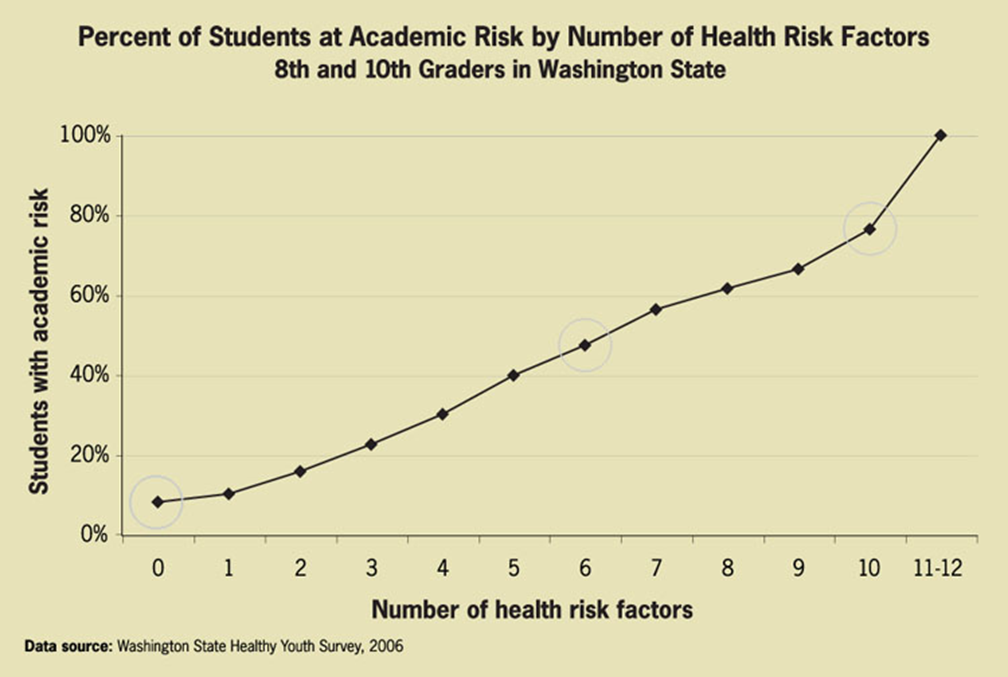 Washington State has 1 million students enrolled in its public school system. I was amazed to learn that these students spend half of their waking hours in school, yet for those with health concerns, a lack of coordinated care and dwindling resources threatens equal access to their education. This has significant implications not only for long-term health but also for opportunities to learn and succeed at school.
Washington State has 1 million students enrolled in its public school system. I was amazed to learn that these students spend half of their waking hours in school, yet for those with health concerns, a lack of coordinated care and dwindling resources threatens equal access to their education. This has significant implications not only for long-term health but also for opportunities to learn and succeed at school.
In our schools over the last decade, the rate of diabetes, anaphylactic allergies, seizure disorders, asthma, obesity and mental health problems have increased substantially in the student population (Fleming, 2011). Chronic disease prevalence has increased from one in eight children to one in four, especially for manageable conditions like asthma, diabetes, obesity, and learning and behavioral disabilities (Van Cleave, Gortmaker & Perrin, 2010).
The Washington Initiative for Student Health (WISH) recognizes the critical role of school health services and equal access to educational opportunities in the lives of children with chronic health conditions. Students’ physical, social and emotional development requires the same level of ongoing assessment and support as their academic development. Education and school health services must address the needs of the whole child.
Research has identified a strong connection between health and learning. According to Dilley (2009), every health risk can affect academic success. The more health risks students have, the less likely they will succeed in school or graduate on time. Each health risk that can be removed has the potential to positively influence academic behaviors.
Dilley (2009) identified smoking, severe asthma, marijuana use, no breakfast and depression as having the strongest association with academic problems; approaching double the risk. Obesity, soda pop, insufficient exercise, TV, alcohol and feeling unsafe at school had a 50% greater risk. I was shocked at the increase in academic risk!
Therefore, schools must recognize health as central to their core mission of student learning. That means creating a healthier school environment which supports students’ well-being and builds a foundation for academic success.
By systematically addressing health-related barriers to learning, schools can both improve academic outcomes for students and reduce educational and health disparities (Basch, 2010).
We know that healthy students are better learners and better learners make healthy communities. Healthy students are more likely to attend school, are better able to focus in class and are more ready to learn, ultimately earning better grades and achieving more, now and in the future.
Collaborative efforts by many stakeholders are needed to support improved student health and educational outcomes. WISH is working toward that end. Schools can play a key role in this transformation.
A quote from former US Surgeon General Dr. J. Elders summarizes it well:
“You cannot educate a child who is not healthy and you cannot keep a child healthy who is not educated.”
Learn more about how you can get involved by visiting the WISH web site. I know you will be as excited as I was!
Source Data:
Dilley, J. (2009). Research Review: School Based Health Interventions and Academic Achievement. Washington State Board of Health, Washington State Office of Superintendent of Public Instruction and Washington State Department of Health. (Graph Source)
Fleming, R. (2011). Imperative Issues Affecting School Nurse Practice. White paper. Washington State Nurses Association.


